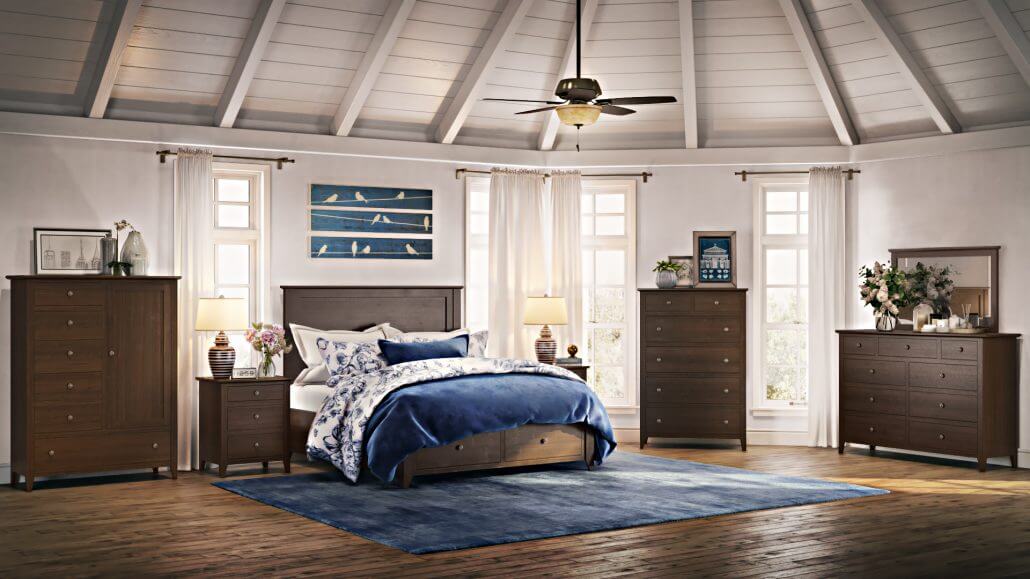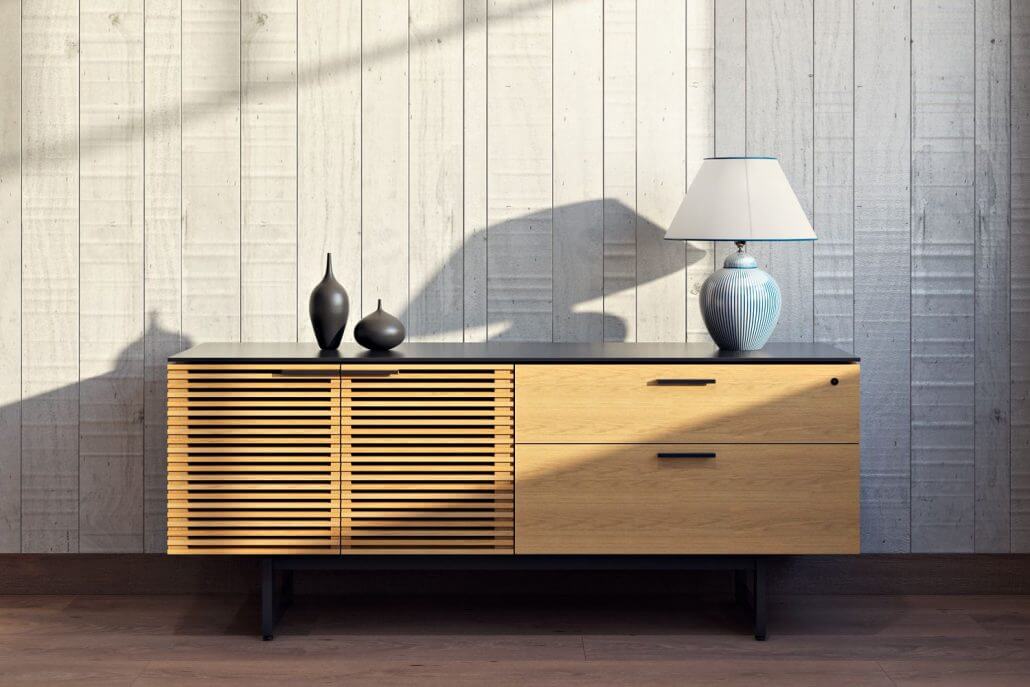CGI vs Product Photography
5 Cases Where You Wouldn’t Tell 3D from Photos
Product images of photorealistic quality are a vital component of any marketing campaign. Low-grade pictures can spoil the whole thing and if an object looks like a rough 3D model, buyers will just pass by. That’s why marketers and manufacturers are so concerned about getting proper product visuals. And when it comes to imagery, they have to choose between two of the most common options — CGI vs product photography.
But it’s not only about quality but also about the quantity of visual content. A furniture brand needs outstanding product imagery for websites, online stores, catalogs, social networks, and print advertising. And ordering photos for all of these purposes can easily eat up the whole marketing budget. Naturally, brand marketers have to get all the furniture prototypes first, then rent transport and a photo studio with equipment, not to mention the photographer’s fee. All of this takes too much money and time. CGI doesn’t require those expenses, but is it really better than photography?
Advanced manufacturers have already solved the CGI vs product photography problem. Many follow the example of the industry giant IKEA who chooses collaboration with a 3D product rendering studio and gets quality CGI that looks exactly like photos. Here are 5 examples of eye-catching promo pics brands came up with using CG imagery.
#1. Stunning Product 3D Photos for Troy Smith

Troy Smith is a well-known Canadian designer, a prodigy of product design, whose works have made a lot of noise at the world’s famous exhibitions. His design approach is amazing, and so are his material and color choices.
Troy Smith contacted our studio for 3D models and photorealistic renderings — he needed product images that would convey the aesthetics of his design and the quality of the material. Troy Smith’s furniture is a statement, a design manifesto, so he had high requirements for visuals, which were fulfilled by our 3D artists.
Since an artist can be understood by another artist only, we made Troy’s mind-blowing design ideas look spectacular and 100% realistic on product silo renderings. Comparing CGI vs product photography for this project, the first one was definitely the best solution because it allowed the creation of multiple pictures for different design options and took less time and money to make.
Usage
As a result of this collaboration, the Canadian designer got jaw-dropping renders for product catalogs, eCommerce platforms, and social networks. Thanks to the quality of CG renderings, the same images were perfect for print media and outdoor advertising as well.
#2. High-End Mosaic and Tiles Renderings for White Marble Source

When it comes to product imagery for finishing materials, it is essential to depict all textures and materials in photorealistic quality. So, again, manufacturers have to compare CGI vs product photography to choose the best tool. Which one is perfect for tile promo?
White Marble Source asked us to show tiles and mosaics not only in close-up views but in full-room sets, i.e. lifestyles. Looking at the room set, potential buyers could see the beautiful patterns of tiles and how they would work with lighting and interior details in composition. Therefore, 3D artists picked up different room scenes of various styles and colors. This way, CG imagery was more effective than photography as it provided a variety of backgrounds for the product.
Usage
White Marble Source turned to CGIFURNITURE for product pictures they wanted to post on their website and social media. Indeed, the brand used them for Facebook, Instagram, and Pinterest and got great feedback from their followers. Moreover, those first-class visuals worked well for online and offline advertisements, too.
#3. Top-Notch Visual Marketing for Wroxeter Furniture Co.

Wroxeter Furniture Co. is a Canadian family-owned and operated brand that produces custom furnishings. They contacted GCIFURNITURE to get a full pack of promo imagery: a product on a white background, a 360° view, and stunning lifestyles.
Going back to the CGI vs product photography comparison, only 3D imagery was able to provide such versatile visuals in a short time — just 48 working hours. To get those, 3D artists made a 3D model of a furniture piece and chose various backdrops and camera settings to get different types of photorealistic CGI.
Silo Renders
White background photography worked perfectly for product pages on e-stores — it showcased the object without distracting shoppers with extra details on the background. Moreover, quality product CGI allowed buyers to zoom in on the image to examine materials and the design.
3D Room Sets
As for lifestyles, Wroxeter Furniture Co. marketers used our 3D library of ready 3D scenes and deliberately selected sets that are completely different by style and color palette. This way they could demonstrate the product’s diversity in various settings.
360° Product View
Our 3D artists also created a 360° model of a piece as an interactive addition to the brand’s website. The final version of a 360° view showcased the product in detail and from all possible angles. Moreover, it allowed visitors to rotate a product model, zoom in and explore it just like they would normally do in brick-and-mortar stores.
Usage
Wroxeter Furniture Co. was about to launch a new product, so they used all those visuals for their catalogs, email marketing, and SMM campaigns. With product CGI at hand, they were able to customize their website and create an eye-catching landing page and advert banners.
#4. Striking Product Imagery for Canadian Dorel Industries

Dorel Industries is a good example of how a company with a rich long history embraces modern technologies and new tendencies of the market. The famous Canadian furniture manufacturer has been in the game for more than 30 years and used to work with traditional photo shoots.
Later, the company’s marketers decided to focus on building the brand in social networks, expanding the audience, and involving the new generation of buyers. So, Dorel Industries contacted our CGI studio and ordered diverse visual material for online promotional campaigns — 3D renderings on the monochrome background and 3D lifestyles.
Usage
Dorel Industries received high-end product images in various interiors. The brand used them to get the attention of younger social network users and gained more popularity among audiences with different tastes. On top of that, Dorel Industries were able to use the obtained product CGI on their website, as well as in printed and outdoor advertisements.
#5. Fascinating CG Images for British Furniture Brand BDI

When it comes to the CGI vs product photography battle, the popular British brand BDI has chosen 3D rendering to visualize their furniture masterpieces. In order to showcase the design and textured facades, the manufacturer needed 3D renders of high photorealistic quality.
It was essential for BDI to demonstrate the furniture piece in different scenes to convey the versatility of the product line and help customers envision the item in their homes. So, our skilled 3D artists kept experimenting with interior styles, colors, and lighting to get the most spectacular images for the client.
Usage
In the end, BDI received top-notch product 3D photography for SMM and their website. They also used those product pictures for both digital and printed catalogs, email campaigns, and online advertising.
So, CGI vs product photography, who’s the winner? Today lots of innovative companies are switching to 3D rendering for a better presentation of their products. With the help of 3D artists, manufacturers can get tons of stunning visual material — white background product photography, beautiful lifestyles, and 360° views. Such photorealistic CGI works for multiple purposes, such as online and offline promo campaigns, printed catalogs, and online listings.
The biggest benefit of CGI is that it comes at a reasonable price and is faster to make than conventional product photography. Therefore, not only famous brands can use it — with 3D technologies, even new small companies get an opportunity to come into the spotlight and make a statement with breathtaking CGI.
Want to stand out among the world’s leading manufacturers? Contact us for 3D product rendering services and you will get stunning visuals that will boost your sales to the skу!
Leave a Reply
Want to join the discussion?Feel free to contribute!



We are grateful for your article; I had already realized that 3D rendering was the way to go :)